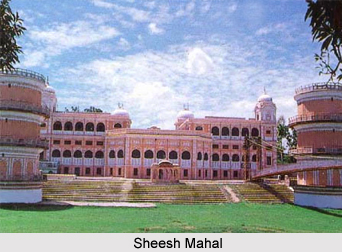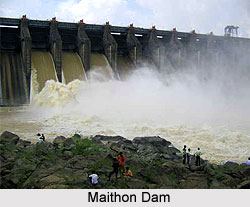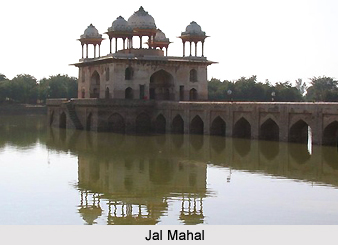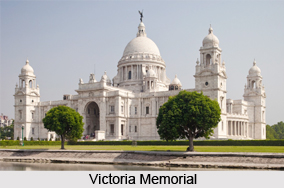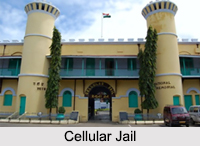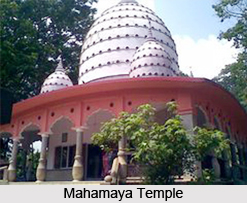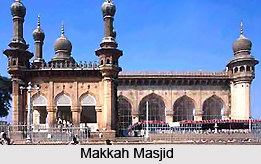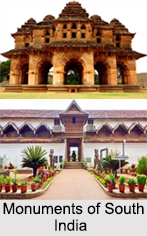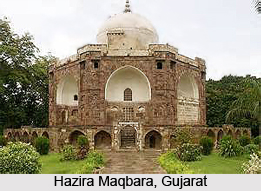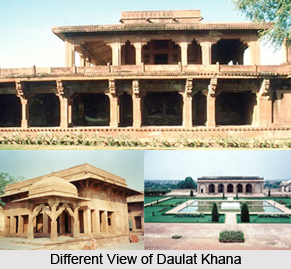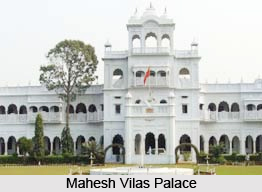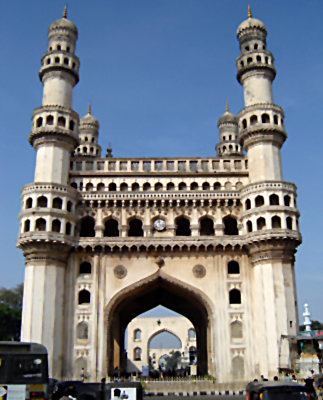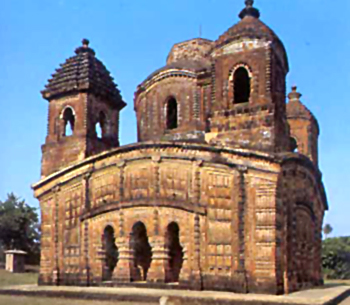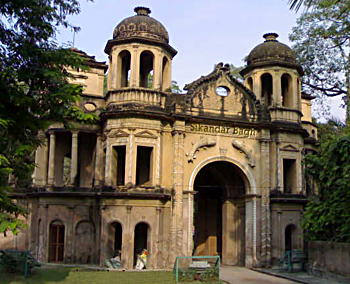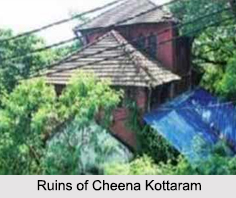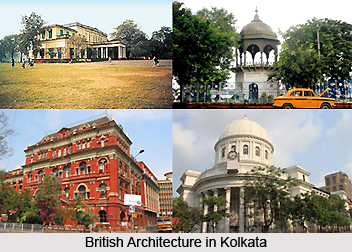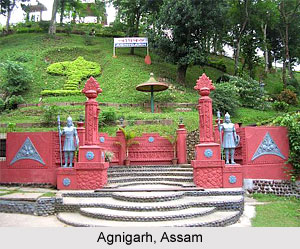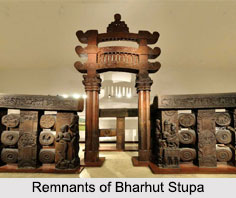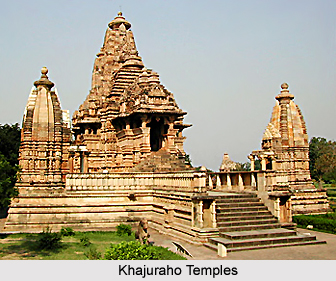 The region of Central India comprises the heartland of India that is the two states of Madhya Pradesh and Chhatisgarh. This vast area of central India bears witness to over 2,000 years of continuous religious activity. The various shrines and temples of Central India enable an individual to experience an inner sense of peace and sanctity. This region is the center of art and architecture of ancient India and the several monuments of the region bear testimony to the fact that art had reached a zenith. A number of deserted palaces, haunted by the shades of departed princes, impregnable hill fortresses, which lie brooding over the forests below, and spectacular ruined cities, studded with the evocative ruins of mosques and tombs of generations long since passed add to the architectural glory of Central India.
The region of Central India comprises the heartland of India that is the two states of Madhya Pradesh and Chhatisgarh. This vast area of central India bears witness to over 2,000 years of continuous religious activity. The various shrines and temples of Central India enable an individual to experience an inner sense of peace and sanctity. This region is the center of art and architecture of ancient India and the several monuments of the region bear testimony to the fact that art had reached a zenith. A number of deserted palaces, haunted by the shades of departed princes, impregnable hill fortresses, which lie brooding over the forests below, and spectacular ruined cities, studded with the evocative ruins of mosques and tombs of generations long since passed add to the architectural glory of Central India.
Monuments are perhaps centralised and pivoted around the states of Madhya Pradesh and Chattisgarh in central India, which date back to centuries into the pre-Christian era. Central India, with its mystical calling of the wild, the gargantuan epic muted edifices tries to emote a sense of their own, the coifed architectures of stone and rock varying at each corner, makes a perfect heritage monument site, which makes visitors turn admirers to return again and again.
Historical Monuments in Madhya Pradesh
The state of Madhya Pradesh has a glorious history and the prime source of it is nothing but the variety of monuments of Madhya Pradesh. Monuments as old as the first century are found in Madhya Pradesh. As the state has been invaded by various dynasties at different times it is very obvious that the monuments will have a variety of architectural style. All the architectural pieces in the region bears an identity of its own and at the same time reflect the spirit of a particular age. The architectural styles in the state of Madhya Pradesh predominantly reflect the styles of the Mughals, the Paramaras, the Holkars, the Scindias and the Begums. The various structures that have been incorporated within the monuments of Madhya Pradesh are forts, palaces, temples (of Hindus and Jains), mosques, tombs, churches, stupas, tanks, reservoirs, and caves cut out of rocks.
Khajuraho Temples
The Khajuraho Temples an epitome of spiritualism and eroticism that tops among the monuments of Central India. The Khajuraho Temples are known for their architectural vividness and also closely reflects the Hindu style of architecture. The main temples in the western group in Khajuraho are mostly Hindu temples such as the Matangeshwara temple and the Vishwanatha temple. The eastern group has Jain temples like Parshvanatha Temple and the Adinatha temple.
Bhimbetka Caves
Bhimbetka in Madhya Pradesh reflect the magnificence of art and architectural style. These caves, which are recently discovered, were biggest shelter of prehistoric men. The caves here are in true sense `The portal to the ancient gallery of Bhimbetka`, which preserves the fascinating paintings dating back to the Paleolithic times.
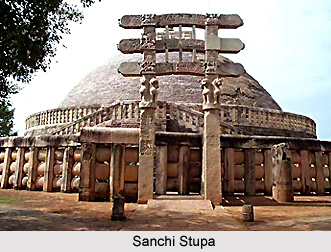 Sanchi Stupa
Sanchi Stupa
The Sanchi Stupa in Madhya Pradesh reflects the splendour created in stone. The Stupa constructed under the Maurya Empire is the edifice of Buddhism which had flourished in Central India during the 5th century BC.
Gwalior Fort
Referred to as `the pearl amongst fortresses in India` by Mughal emperor Babur, the Gwalior Fort is one of the most impenetrable fortresses located in India. It is believes to have existed as early as the beginning of the 6th century.
Bhojeshwar Temple
Jahaz Mahal
The splendid architecture of Jahaz Mahal occupies an expense in the Mandu region of Madhya Pradesh. It was built during the reign of Mandu Sultan Ghiyas-ud-din Khilji, who is believed to have as many as 15,000 women as his consorts. It is a remarkable instance of Islamic Architecture built during the second-half of the 15th century.
Taj-Ul-Masajid
Taj-Ul-Masajid is among the most prominent historical structures not only in Madhya Pradesh but in the entire country. It is one of the fine specimens of Mughal architecture featuring marble dome and tall minarets. It was built in the 19th century.
Jami Masjid
Jami Masjid was built during the reign of Hoshang Shah, following Mughal architecture. The inscription on the mosque hints that the mosque was modelled on the basis of the model of Damascus Mosque in Syria.
Bir Singh Palace
Located near the Datia Lake, the Bir Singh Palace is seven-story ancient structure perched atop a small hill. The palace was built in 1614 and it redefines the Bundela architecture with fine craftsmanship of the erstwhile era.
Bhojeshwar Temple was built by Raja Bhoj during the 11th century and has an 18 feet tall linga. It is a Hindu temple dedicated to Lord Shiva whose construction was abandoned before its completion.
Historical Monuments in Chattisgarh
Chattisgarh which received the status of statehood in the year 2000 is full of ancient exquisitely carved temples, Buddhist sites and palaces. The town of Malhar is renowned for its archaeological importance. The major monuments of the state include Kawardha Palace, Bhoramdeo Temples, Ratanpur Fort and a lot more.
Bastar Palace
Bastar Palace is an archaic palace which was constructed when the Kings of Bastar moved their capital to Jagdalpur. It was founded in the early 14th century, supposedly by a brother of the last ruler of the Kakatiya dynasty.
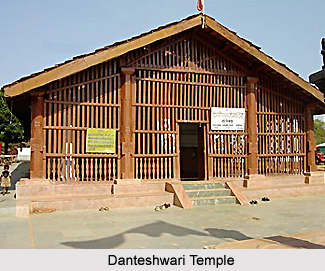 Kanker Palace
Kanker Palace
Kanker Palace is another significant historical place that was initially constructed in the 20th century. Originally known as the Radhanivas Bagicha, the palace was later on re-built in 1937.
Bhoramdeo Temple
Built between the 7th to the 11th centuries, the Bhoramdeo Temple is referred to as Khajuraho of Chhattisgarh. Nestled amidst the magnificent setting of mighty Maikal mountains, the top of the temple offers spectacular views.
Kawardha Palace
Kawardha Palace is situated on Maikal Ranges at 941 meters altitude above sea level. It was constructed in the 1930s and back then stones and marbles were used to carry out the construction of the palace.
Devrani-Jethani Temple
Devrani and Jethani temple is one remarkable historical place in Chhattisgarh. It is located in Tala region of Chhattisgarh. These two temples are located just adjacent to each other. They owe their names to their dimensions.
Ratanpur Fort
Ratanpur Fort in Bilaspur is an old fort whose exact date of construction is shrouded in mystery. The architecture of the fort is simple and strategic yet grand.
